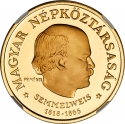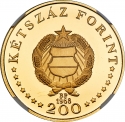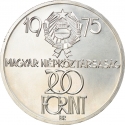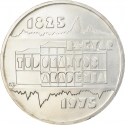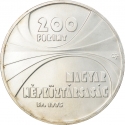You are about to finish your registration. Please check your mailbox (including spam folder). There should be a letter with a confirmation link. Check setting to make sure that your e-mail address is correct.
Send letter againDescription
The inception of the first Hungarian gold coin traces back to the late 13th century under the reign of King Charles I, also known as Charles Robert. Confronting economic challenges and endeavoring to stabilize the kingdom's monetary system, Charles I initiated a bold monetary reform.
In 1325, Charles I introduced the "gold florin" (forint) as Hungary's official currency, drawing inspiration from the successful gold florins of Florence. Crafted from premium-quality gold, this coin aimed to standardize currency and facilitate trade both domestically and internationally.
The introduction of the inaugural Hungarian gold coin marked a pivotal moment in the kingdom's economic evolution, furnishing a reliable and esteemed currency that facilitated commerce and elevated Hungary's stature within the region. Over time, the gold florin gained widespread acceptance and circulation, contributing significantly to the kingdom's prosperity.
Today, the inaugural Hungarian gold coin serves as a testament to Hungary's numismatic legacy and the visionary leadership of King Charles I in establishing a robust and dependable currency system during the medieval era.
Obverse

|
Depicts an initial extending from its expansive "A" and representing crowned and armored King Charles I keeping his coat of arms in the left hand and the globus cruciger in the right, surrounded by two circles of inscritpions. The first one is in Latin "Charles Robert King" with dates of his reign and the second one is in Hungarian "In memory of the first Hungarian gold forint" with the engraver's initials (CSV) below. AZ ELSŐ MAGYAR ARANYFORINT EMLÉKÉRE |
|---|---|
Reverse

|
Depicts the Anjou lily, which is identical in form to the lily on the first Hungarian gold forint coin issued during the reign of King Charles I, with the mintmark (BP) on the left, the issue date on the right, the denomination below and the country name (Hungarian People's Republic) above. To the left of the lily stem, the engraver's initials (KJ). MAGYAR . NÉPKÖZTÁRSASÁG . FORINT |
| Edge |
Depicts 16 stylized leaf motifs reminiscent of the jewelry from the Hungarian Conquest era, arranged in alternating fashion. Additionally, interspersed between every two leaves, one rhombus shape is discernible. |
200 Forint
People's Republic
First Hungarian Gold Forint of Charles Robert
KM# 614 Unger# 1613 Adamo# EM56
First Hungarian Gold Forint of Charles Robert


